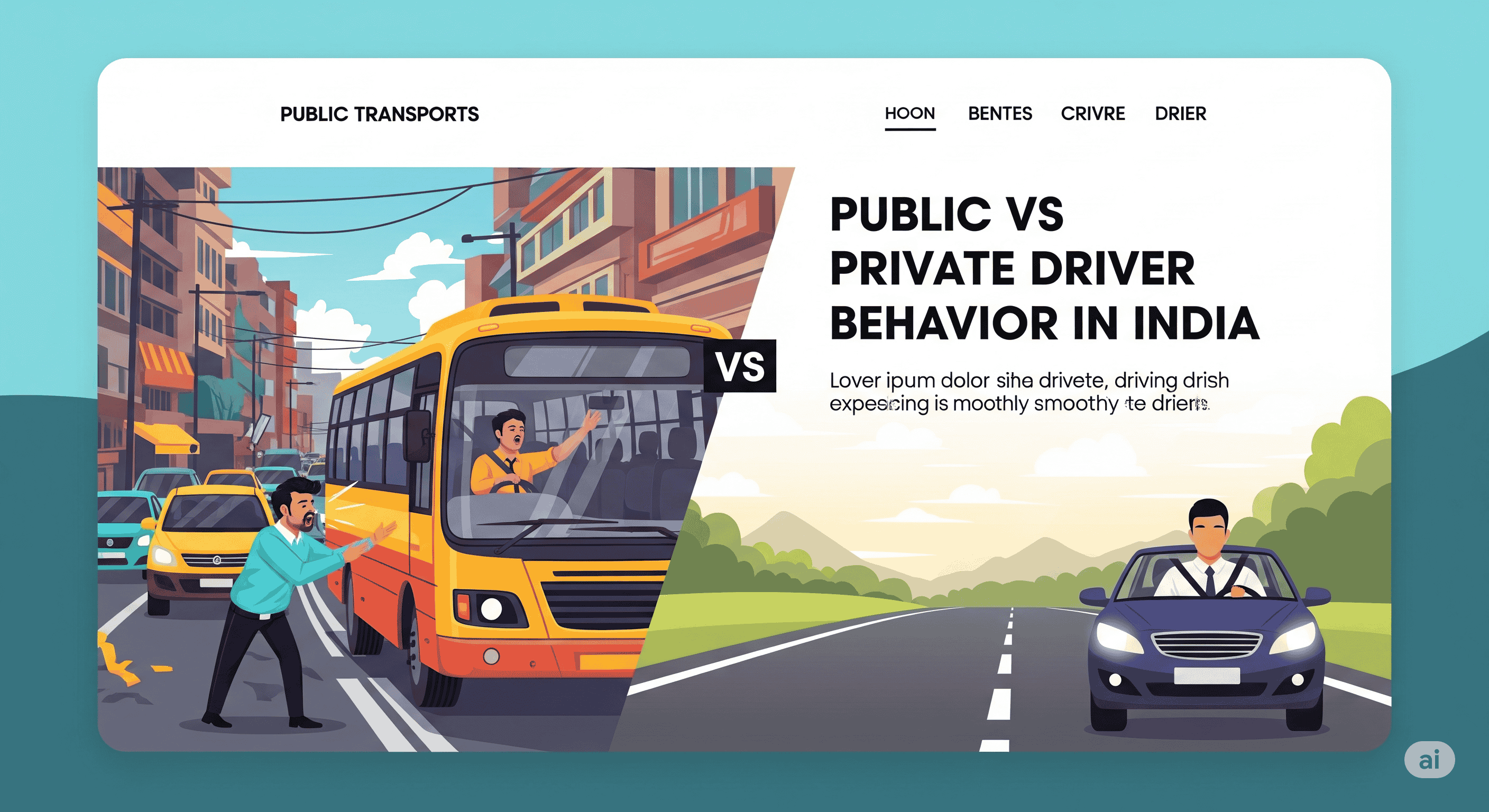🛣️ Introduction: Two Driving Worlds on One Road
India’s roads are a fascinating mix of driver behavior : from private car owners navigating city streets to public drivers managing buses, autos, and taxis daily. But there’s a stark contrast in how they behave on the road — in terms of discipline, responsibility, stress levels, and rule compliance.
At Hubert Ebner India, we explore and address these behavioral differences to create safer, more efficient traffic ecosystems through specialized driver training.
🚦 Key Differences Between Public and Private Drivers
| Category | Public Drivers (Buses, Autos, Taxis) | Private Drivers (Car Owners, Families) |
|---|---|---|
| Road Time | 6–12 hours daily | 1–2 hours on average |
| Purpose | Commercial livelihood | Personal transportation |
| Training Received | Often formal/licensed | Mostly informal/self-taught |
| Stress Factors | Income pressure, targets | Traffic, punctuality, road rage |
| Rule Adherence | Frequently compromised under pressure | Varied — some follow, some don’t |
| Exposure to Accidents | Higher due to hours on road | Lower, but growing |
| Behavioral Risk | Speeding, lane cutting, honking | Impatience, aggressive overtakes |
👮 Why Do Public Drivers Often Behave Aggressively?
- Daily time pressure: Meeting trip targets for earnings
- Heavy passenger loads: Adds to mental fatigue
- Lack of refresher training: Behavior not updated over years
- Weak enforcement: Penalties are often not deterrent enough
- Urban chaos: Limited space and constant maneuvering demand quick (sometimes risky) decisions
🚗 What About Private Drivers?
While they drive less, private vehicle users also contribute to road issues:
- Lane indiscipline
- Parking violations
- Impulsive overtaking
- Aggressive honking
- Distracted driving (mobile use)
They may lack formal training and often ignore road etiquette, believing the rules apply more to commercial drivers.
🧠 Behavioral Training Insights from Hubert Ebner India
At Hubert Ebner, we study driver behavior in real traffic environments through assessments, interviews, and simulation tools. Here’s what we’ve found:
🔍 Key Issues with Public Drivers:
- High stress = rash driving
- Limited awareness of modern road rules
- Low emotional intelligence on-road
- No access to driver wellness programs
🔍 Key Issues with Private Drivers:
- Overconfidence due to personal vehicle control
- Minimal understanding of traffic signs
- Peer pressure leading to dangerous behavior
- Often unaware of safe driving distances
📚 Our Solutions for Both Driver Segments
🚍 Training for Public Transport & Commercial Drivers
- Defensive driving modules
- Stress and fatigue management
- Passenger etiquette
- Handling peak traffic hours
- Emergency response training
🚘 Training for Private Drivers
- Basic road signs and lane rules
- Respectful driving driver behavior
- Safe overtaking and signaling
- Parking ethics
- Road rage awareness and control
We also offer custom programs for corporates, societies, and driver associations.
🎯 Real Impact: Case Study
Client: State Transport Authority – South India
Objective: Reduce rash driving among bus operators
Solution: 3-day behavioral and VR-based training by Hubert Ebner
Results:
✅ 30% drop in over-speeding cases
✅ Better passenger feedback
✅ Reduced accident-related complaints
💡 Why This Comparison Matters
Understanding the contrast between public vs. private driver behavior is crucial for:
- Designing better driver training programs
- Improving public safety
- Informing government transport policies
- Enhancing urban traffic planning
👨🏫 Let Hubert Ebner Help Bridge the Gap
With over 40 years of experience in driver training and road safety education, Hubert Ebner India is leading the way in behavior-focused interventions for all road users.
📍 Serving clients in Delhi NCR, Mumbai, Chennai, Bengaluru, Hyderabad, and 25+ cities




